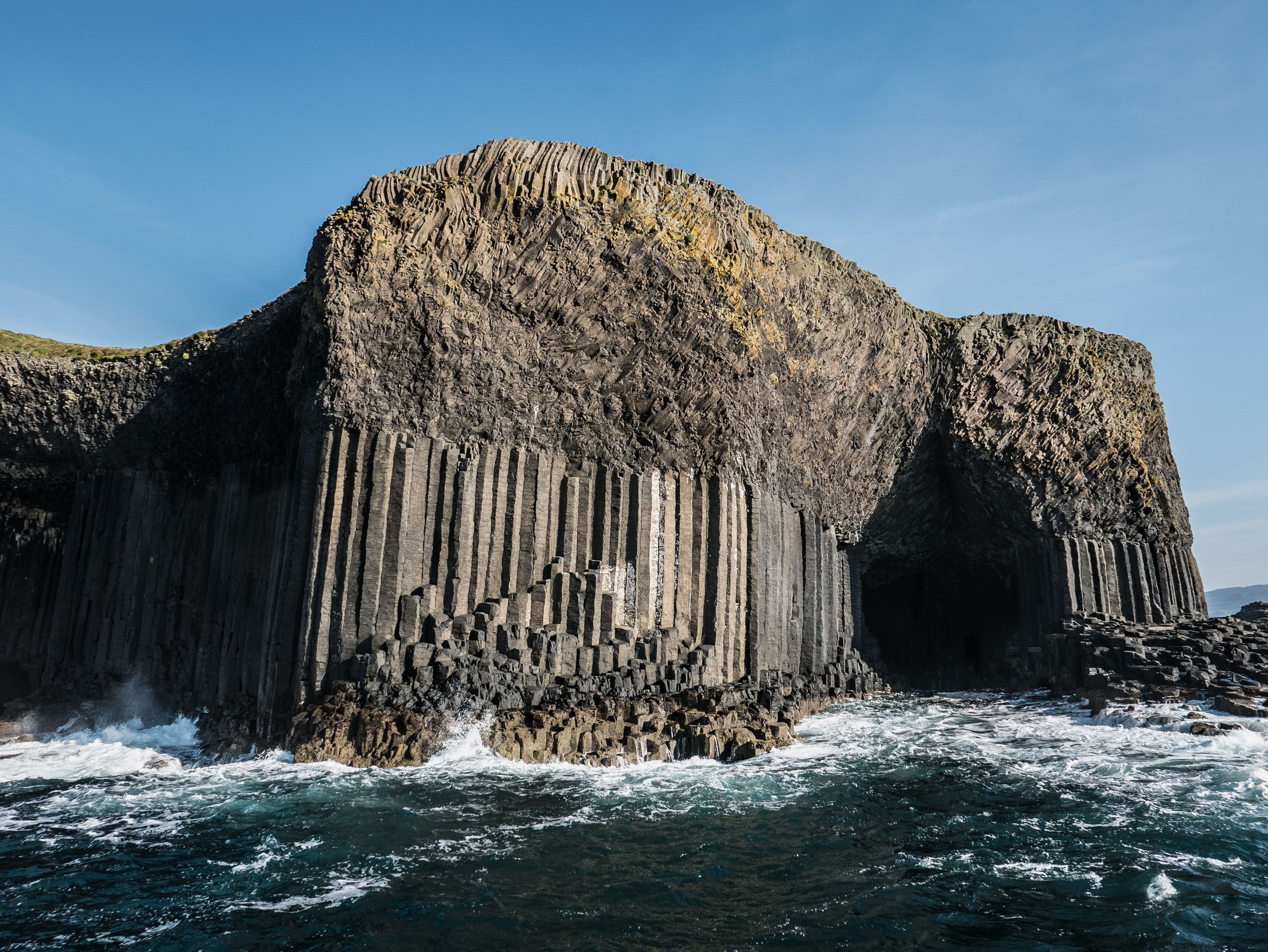This article first appeared in Issue 16 of our free digital magazine CURIOUS.
A dramatic sight awaits anyone drifting near the shores of the Isle of Staffa where a unique sea cave is carved into the rugged coastline. Known as Fingal’s Cave, its name comes from an Irish myth in which Fionn MacCumhaill, nicknamed Fingal for “white stranger”, migrated to Scotland from Ireland. Fingal was believed to be the creator of the Giant’s Causeway, which boasts a similarly hexagonal esthetic.
The Isle of Staffa is small and uninhabited, but it attracts lots of tourists each year who are drawn to its peculiar, hexagonal-shaped basalt columns. Most of the columns are true hexagons with six sides, but five-sided and seven-sided columns can also be found, according to the Scottish Geology Trust.
Fingal’s hexagons were stacking up around 60 million years ago at a time when the Atlantic Ocean was still taking shape. They’re the result of what unfolds when molten lava cools and contracts, breaking apart in an orderly fashion – which is more than can be said for us under pressure.
“Imagine a huge flow of hot, liquid magma that is settling,” posits Arizona State University. “The outer layer is starting to cool and darken in color from orange to black. As it cools, it needs to shrink a bit, as hot materials usually take up more space than cooler ones. Because of this shrinking, the surface of the lava starts to crack. But this cracking isn’t always random. In this case, the lava starts to crack into regular shapes.”
Subscribe to our newsletter and get every issue of CURIOUS delivered to your inbox free each month.

The cave has been nicknamed “nature’s cathedral”.
Image credit: Donna Carpenter/Shutterstock.com
Hexagons are just one of the many patterns that we see in nature, and the uniform magic of Fingal’s Cave is a reminder that you can’t hide from math – not even in a decaying shrub.
Resembling a giant honeycomb, the gridded geometric pillars stretch to heights of 22 meters (72 feet). Some say it also resembles a cathedral, which leads us to another quirk of Fingal’s Cave.
It has a funky sound as well as appearance thanks to its remarkable acoustic properties. The unique shape of its columns means sound reverberates unusually, creating an otherworldly auditory experience that’s earned the cave the nickname “nature’s cathedral”. It’s also known in Gaelic as “An Uamh Binn”, meaning “the cave of music”.
Fingal’s Cave inspired “Hebrides Overture” by composer Felix Mendelssohn, who visited the cave in 1829. As it happens, there are a few natural caves that have proven to be a hit with musicians, just ask the glow worms in New Zealand’s Waitomo Cave.
How to get there: You can explore Fingal’s Cave by boat from Oban, or as part of a swimming tour that’ll take you into its mouth. If you’re lucky, you might even spot a basking shark, but you should stay out of theirs.
CURIOUS magazine is a digital magazine from IFLScience featuring interviews, experts, deep dives, fun facts, news, book excerpts, and much more. Issue 19 is out now.
Source Link: Fingal’s Cave: Nature’s 60-Million-Year Old Cathedral Is Brimming With Hexagons